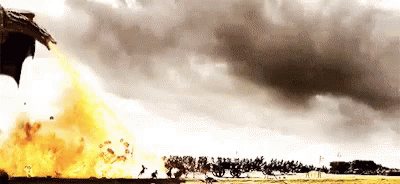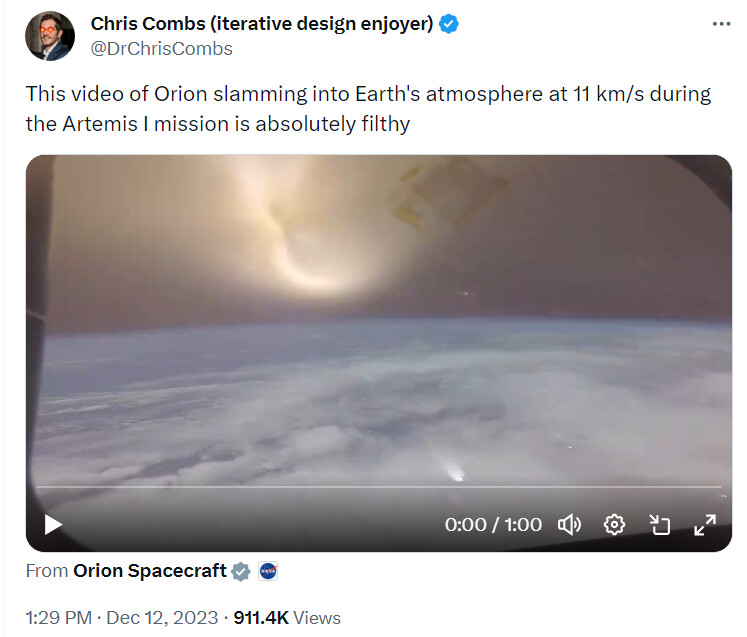Nice commentary by Ozzyman, even included the SpaceX buzzword Rapid Unscheduled Disassembly (R.U.D.). Per RUDua Ad Astra.
This was ok but peak Ozzy Man was GoT.

“BARBEQUE!”
Batteries have a limited number of cycles, so I wouldn’t be wasting mine on the small returns you would get from that.
Yeah, battery cycling is a real issue. But there are commercial ways around that.
I can see people signing up to a commercial agreement where they were paid for access to the battery instead of just the energy exported.
Instead of companies building new grid scale batteries, they would pay 100,000 car owners for access to their battery. The payment would cover the costs of the early battery replacement, but would avoid most of the capital costs of designing and building a large industrial asset.
Grid scale batteries have the same cycle issue as car batteries. They still make money and deal with replacing cells, so there’s no reason a distributed battery couldn’t do the same. If we don’t tap into the cars (and other behind the meter batteries), we are leaving half the storage capacity unused. The trick is to cover the costs to the owner of getting their battery replaced early.
Wait… how did we end up talking this in the space thread?
I’ll copy it over to the climate thread for further discussion.
Roo-ver.
One giant cringe for mankind.
It is a cringe for all mankind but kinda works.
\Poms think it should have been Roover MacRooverface.
The first crossbowman I get to double-shot in Civ VI always gets re-named to Shooty McShootFace.
NASA’s James Webb Space Telescope celebrates its second birthday this Christmas. Here are some its best images
Posted 1h ago
In 2021, the world witnessed a Christmas miracle as NASA launched the largest and most powerful space telescope into the great abyss.
The collective effort from people across thousands of countries dating back to the 1990s has led to the birth of the James Webb Space Telescope (JWST).
In celebration of its monumental second year out in space, here are some of the best pictures science has gifted us since.
First Earth-sized exoplanet, LHS 475 b
The exoplanet is 41 light years away and is 99 per cent of Earth’s diameter.(Supplied: NASA)
The JWST is the only telescope capable of defining the characteristics of Earth-sized exoplanets such as this one.
Apart from being similar in size, LHS 475 b differs from Earth in both temperature and time.
Orbiting 41 light years away from us, it measures a few hundred degrees warmer and a year on the exoplanet is about two days.
Star on cusp of death, Wolf Rayet 124
The outburst of purple gas and dust once made up the Wolf Rayet 124 star’s outer layer.(AP: NASA, ESA, CSA, STScI, Webb ERO Production Team)
A captivating image of a star as it combusts into dust emerges in another NASA first.
The rare and fleeting phase was captured as an explosion of purple hues that was once the star’s outer layer.
Remnants of an exploded star, Cassiopeia A (Cas A)
NASA published this image of Cassiopeia A, a supernova remnant, using data from Webb’s Mid-Infrared Instrument.(Supplied: NASA, ESA, CSA, D D Milisavljevic (Purdue), T Temim (Princeton), I De Looze (Ghent University). Image Processing: J. DePasquale (STScI))
Dubbed as both “a science and an art”, the remains of Cas A interpreted as this colourful cosmic dust was created using data from JSWT’s Mid-Infrared Instrument (MRI).
The MRI allowed for the image to be processed in incredible detail, presenting itself in everyday colours we recognise.
A planet in the making, NGC 346
NGC 346 is a dynamic star cluster that lies within a nebula 200,000 light years away.(Supplied: NASA, ESA, CSA, Olivia C Jones)
Brewing in a neighbouring galaxy, the Small Magellanic Cloud — a nebula 210,000 light years away — is planet NGC 346.
The microscopic grains of sand and dust coming close to a cluster of young stars signify the forming of a planet.
Debris belts around a star named Fomalhaut
The dusty debris disk surrounding the young star Fomalhaut encompasses three nested belts extending out to 23 billion kilometres from the star.(Supplied: NASA, ESA, CSA)
The three rings surrounding the young star extend out to 23 billion kilometres, which is 150 times the distance from Earth to the Sun.
Known as “debris disks”, the dusty belts are a product of ruins from collisions of bodies such as asteroids and comets.
Water in asteroid belt, around comet 238P/Read
This illustration of Comet 238P/Read shows the main belt comet sublimating — its water ice vaporising as its orbit approaches the Sun. (NASA/ESA)
The discovery of water in the Solar System’s main asteroid belt confirmed a longstanding theory NASA has had.
It demonstrated that water ice could be preserved inside Jupiter’s orbit, and could have been delivered to Earth — linking back to early origins of our water source.
A collection of newborn stars, Rio Ophiuchi cloud complex
This visualisation of matter is invisible to the human eye and it can only be detected by the JWST. (NASA, ESA, CSA, STScI, Klaus Pontoppidan (STScI))
Some 390 light years away lies the nearest star-forming region to Earth.
The Rio Ophiuchi cloud complex comprises about 50 young stars nestled among jets of molecular hydrogen in red and cosmic dust in bright greenish-yellow.
Here’s a video tour of the stars in the area.
James Webb Space Telescope’s visualisation of the Rho Ophiuchi cloud complex.
The explosion of a dying star, Ring Nebula aka Messier 57
The new James Webb images of Messier 57 clearly show the main ring, surrounded by a faint halo and with many delicate structures.(Supplied: University of Manchester)
The JWST has taken us through the various life phases of a star, and that includes one of Ring Nebula in its last stages of existence.
Named after its distinct circular pattern, the star was first discovered in 1779 by French astronomer Antoine Darquier de Pellepoix.
Whirlpool galaxy, M51
The M51 galaxy is called the Whirlpool due to its distinct spiral arms.(Supplied: ESA/Webb, NASA & CSA, A. Adamo (Stockholm University) and the FEAST JWST team)
This is the clearest image of the spiral galaxy in almost two decades.
M51 is believed to get its swirling structure from the gravitational pull of a neighbouring galaxy.
Supersonic outflow of a young star, Herbig-Haro 211
NASA’s James Webb Space Telescope’s high resolution, near-infrared look at Herbig-Haro 211.(ESA/Webb, NASA)
At no more than a few tens of thousands of years old, Herbig-Haro 211 has a mass of only 8 per cent of our Sun.
But it’s destined to grow into a similar size, giving us a glimpse of what our Sun may have once looked like in its premature days.
And not forgetting, Uranus’s rings!
This image of Uranus from NIRCam (Near-Infrared Camera) on NASA’s James Webb Space Telescope shows the planet and its rings in new clarity. (Supplied: NASA, ESA, CSA, STScI)
Boasting a total of 11 rings across the inner and outer sets, Uranus shines through the JWST.
The inner system encompasses nine dark grey rings while the outer rings are in red and blue.
This sort of stuff makes you wonder how things will be in a hundred years, if we manage not to mess everything up.
SpaceX Launch of Falcon Heavy for the USSF-52 / X-37B
T-13minutes to go for those that want to watch




